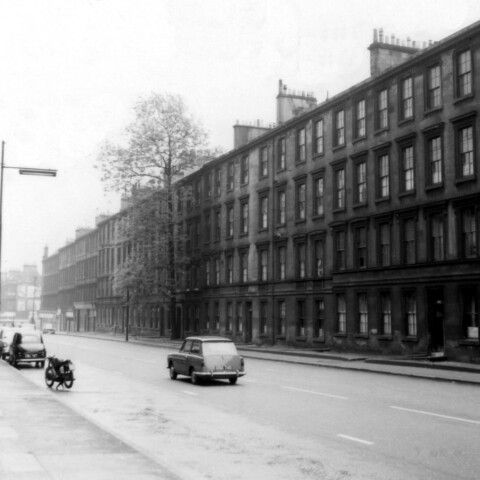Summary
Automatic Static – Time Before Time ALBUM REVIEW
Jazz duets aren’t dead, they just smell weird, writes GARY STEEL about an odd sax/drums project.
 Veteran New Zealand drummer D. Bruce Aitken – now based in New South Wales – has made the best music of his career over the past couple of years. Blame age, the weather, or even blame the dreaded pandemic, but there’s clearly been a huge sea change in Aitken’s thinking.
Veteran New Zealand drummer D. Bruce Aitken – now based in New South Wales – has made the best music of his career over the past couple of years. Blame age, the weather, or even blame the dreaded pandemic, but there’s clearly been a huge sea change in Aitken’s thinking.
A superbly skilled stickman, Aitken has even run his own international drum festival from his previous base in Nova Scotia, but for most of his long career he’s dutifully kept the backbeat behind a wide variety of bands without ever seeming to feel the need to grab the spotlight.
Support Witchdoctor’s ongoing mission to bring a wealth of historic music interviews, features and reviews to you this month (and all year round) as well as coverage of quality brand new, contemporary NZ music. Witchdoctor, entertainment for grownups. Your one-off (or monthly) $5 or $10 donation will support Witchdoctor.co.nz. and help us keep producing quality content. It’s really easy to donate, just click the ‘Become a supporter’ button below.
Bend your ear for recent albums like The Sounds Of Sounds and The Face Vol. 2 (both available on Bandcamp) to hear the miraculous things he can do with his battery of percussion toys, and the sheer creativity of a man unleashed to do exactly what he feels like with those toys. And if the sum total of your experience of “the drum solo” is John Bonham’s excruciatingly dull epic on the live recording of Led Zep’s ‘Moby Dick’, you really do need to hear a master percussionist like D. Bruce.
 A Time Before Time, however, is an album of improvisations with saxophonist Michael Brown, with accompaniment from Levi J. Burr on guitar and bass for all but one of the eight tracks. It shares some characteristics with those other albums in the sense that Aitken recorded his drum tracks in his new home studio with the overdubbing skills he’d subsequently acquired. And like those albums, the other contributions were recorded remotely during the pandemic.
A Time Before Time, however, is an album of improvisations with saxophonist Michael Brown, with accompaniment from Levi J. Burr on guitar and bass for all but one of the eight tracks. It shares some characteristics with those other albums in the sense that Aitken recorded his drum tracks in his new home studio with the overdubbing skills he’d subsequently acquired. And like those albums, the other contributions were recorded remotely during the pandemic.
While I derived a certain amount of enjoyment from these tracks, Brown’s particularly dirty-sounding sax and especially Aitken’s crisp and dynamic drums and percussion, I could never quite resolve the fact that Brown and Aitken never sound like they’re actually playing together.
From a listener’s point of view this music sounds completely improvised. The saxophone is the dominant instrument sonically and melodically, and it feels like he’s completely making it up as he goes along. The sounds he gets out of that thing are great, but it never felt like he really had anything to say, and maybe part of that is to do with the lack of genuine interaction with the drums.
 Of course, Aitken does his best to construct a rhythmic latticework that implies interaction, but I never really felt it. When two instruments are improvising, you expect moments of dullness but also where sparks fly, sparks of real connection. That never happens here.
Of course, Aitken does his best to construct a rhythmic latticework that implies interaction, but I never really felt it. When two instruments are improvising, you expect moments of dullness but also where sparks fly, sparks of real connection. That never happens here.
There’s a certain dryness and austerity to the sound right from the get-go on ‘Animal Instinct’ that’s a wee bit off-putting, at least to someone who isn’t a jazz-improv purist. D. Bruce shuffles and tickles and whacks his kit judiciously while a guitar thrums away quietly in the background on an almost ambient level and a bass walks around aimlessly. Aitken is such a fine percussionist, however, that if you turn it up loud enough you can concentrate on his dynamic discharges and forget the rest.
‘The Formal Attire’ is rather more compelling, with its smoky ambience and almost cinematic allure. Aitken manhandles various shakers and other pleasing noisemakers while the sandpapery sax wheezes away disconculately at the back of the room, and a gentle ambient guitar glides in the background. At one point the bass plays a chord sequence so similar to another Sydney band, The Necks, that I wonder if the piece is going to last an hour.
 On the title track, the guitar creates an almost liquid canvas for the improvisors but the bass is just horrible, wandering around like a loon not knowing who to talk to at the party. Brown’s sax is always flinty, throaty and a little abrasive, which creates enjoyable sonic textures. The drumming is never less than crisp, creative and commanding. But unfortunately, it does sound rather like the two musicians are playing at two simultaneously occurring sessions.
On the title track, the guitar creates an almost liquid canvas for the improvisors but the bass is just horrible, wandering around like a loon not knowing who to talk to at the party. Brown’s sax is always flinty, throaty and a little abrasive, which creates enjoyable sonic textures. The drumming is never less than crisp, creative and commanding. But unfortunately, it does sound rather like the two musicians are playing at two simultaneously occurring sessions.
‘QUASHI-Moe-Toe’ features lonely saloon bar sax honking like a horny goose, and D. Bruce working industrially away on an artillery of things to hit. There’s vapourous guitar in the background and more aimless bass. It’s the sax that sounds aimless on ‘Walking Backwards To The Bar (Version 1)’.
‘Em Bee Blews’ is very much D. Bruce’s show and a chance for him to get into those shakers and whistle-makers and a few more things besides, including a short cymbal-heavy groove. He’s quite busy but the sax feels disengaged.
Brown’s sax is much better represented on ‘Just Like That’, one of the longer tracks and a chance for him to get really smoky with some saxual healing.
And finally, ‘Walking Backwards To The Bar (Version 2)’ is… something else again! This one track features Marcus Sturrock on guitar, and somehow the whole thing sounds bigger, more dynamic, and more close-miked than the rest. Where Burr’s guitar worked okay as background ambience, Sturrock’s presence is more commanding, and everything sounds more cohesive. It starts out sounding like we’re stranded in the deepest Amazon jungle and during its relatively brief 5 minutes there’s just time for a nifty acoustic guitar interlude and a tantalisingly brief groove thing.
I’d love to hear what Brown and Aitken could do in real time in the same room, and especially if they had some compositions or at least grooves to work with. For me, A Time Before Time is a noble failure: a project that never quite gets to fly its freak flag, but which has a lot going for it nevertheless, and is definitely worth a listen.
https://dbruceaitken.bandcamp.com/album/a-time-before-time-2
















